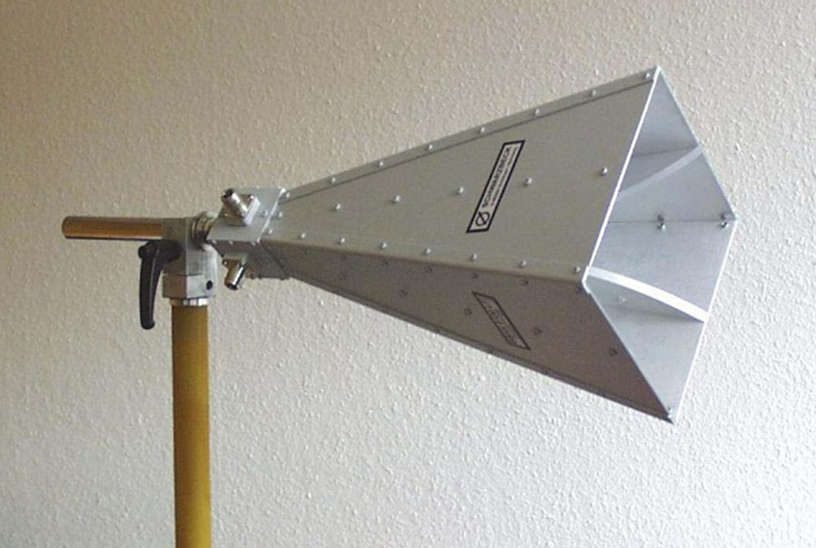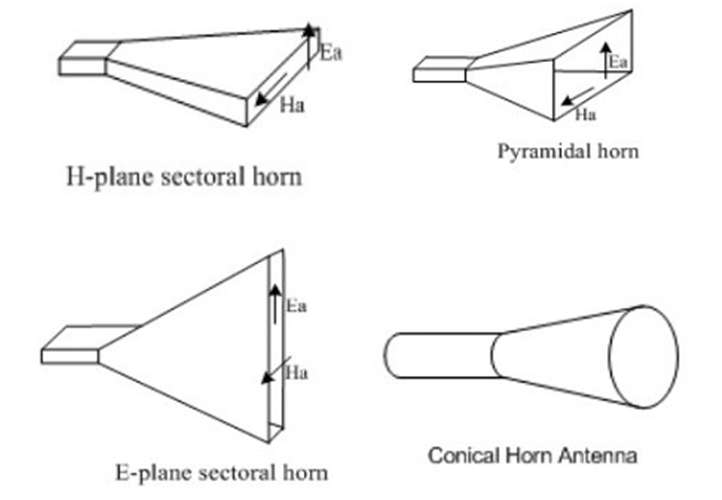- It is a type of antenna which is constructed when the end of the antenna is flared out or tapered in the shape of a horn. This antenna operates in microwave frequency.
- The horn antenna operates in ultra-high and super-high frequencies ranging between 300 MHz to 30 GHz.
Working of Horn Antenna
- The energy of the beam when slowly convert into radiation, then it reduced the losses and the focusing of the beam improves.
- A Horn antenna may be considered as a flared-out waveguide, by which the directivity is improved and the diffraction is reduced.
- The below image shows the model of a horn antenna.

Types of Horn Antenna
There are 4 types of horn antenna i.e., and in sectoral horn there are 2 types of horn is mentioned in below.
- 1. Pyramidal horn
- 2. Sectoral horn
- I. E-plane
- II. H-plane
- 3. Conical horn
- 4. Exponential horn

Advantages of Horn Antenna
- It offers easy construction as can be easily configured with a waveguide.
- The absence of a resonance element in the structure allows it to operate over a wide bandwidth.
- The horn antenna provides good impedance matching.
- It is highly directional thereby providing higher directivity.
- The antenna offers fewer reflections.
Disadvantages of Horn Antenna
- The directivity of the antenna is dependent on the flare angle.
- The dimensions of the flare must be sufficiently large and this sometimes makes the antenna bulky.
Applications of Horn Antenna
- Used for astronomical studies
- Used in microwave applications
